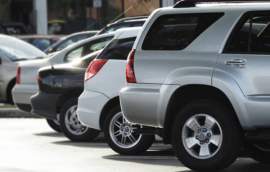
Everything to Know About VIN's

What is a VIN?
A Vehicle Identification Number, commonly referred to as a VIN, is a unique serial number which is used by the automotive industry in order to identify individual vehicles. There are various vehicle history services provided in several countries that may help potential car owners use their VIN to find potentially defective or branded vehicles. Recently VINs are issued as 17 digit serials. Not only can a VIN displays a vehicle’s uniqueness and heritage, a VIN can also be used to track registrations, recalls, warranty claims, insurance coverage and thefts. Each digit or character of a VIN has a specific purpose.
History of the VIN
The VIN was first used in 1954. Detroit automobile manufacturers first began stamping and casting VINs on cars and their parts. The original purpose of the VIN was to give an accurate idea of the vehicle when mass production amounts were starting to scale significantly. Between 1954 and 1981, there were no accepted standards for the VIN, so different auto manufacturers used different formats to issue VINs to vehicles.In 1981, the National Highway Traffic Safety Administration (USDOT) of the United States standardized the format for VINs. They required all road vehicles to have a 17 character VIN, which established the standard VIN system. These VINs could not include the letters I, O, or Q.
The VIN standard was originally described in February 1977 in ISO Standard 3779 and revised last in 1983. The standard VIN system was designed to identify motor vehicles, motorcycles, mopeds and trailers as well.
What is a VIN Inspection?
A VIN inspection is a standard physical examination of your motor vehicle in order to determine whether the VIN of the vehicle matches the VIN listed on the vehicle’s title or main ownership document. The VIN inspection is usually performed by an authorized inspector, such as a DMV employee or a dealer.
During a VIN inspection, a motor vehicle is physically examined to ensure that the VIN matches the documentation presented during a title or registration transaction. The actual VIN sticker and plate are also checked in to order make sure they both are authentic and match the documentation of the vehicle. The VIN is also checked against various state and federal databases of stole cars. The VIN inspection is not used for determining the safety of a motor vehicle or its parts.
Where to Find a VIN
The VIN of a vehicle can be found by looking at the vehicle’s dashboard on the driver side. If you are unable to find the VIN, you can open the driver side door and check at the door post (the point where the vehicle door latches when the door is closed). It is very likely that the VIN is also displayed in this location of the vehicle. If you still cannot find the VIN of the vehicle, you may want to check the following spots:
• Left hand inner wheel arch
• Firewall of the vehicle
• Machined pad on front of engine
• Radiator support bracket
• Steering column
• Passenger or driver side door or post
• Dash by windshield
• Guarantee & Maintenance Book or other vehicle book
For vehicles with later model years, the most common areas to find the VIN of your vehicle are on:
• Drivers door or post
• Left instrumentation/dash plate by window
• Firewall
Types of VIN
There are at least four different competing standards used to calculate VIN:
• FMVSS 115, Section 565: Used in both United States and Canada
• ISO Standard 3779: Used mostly Europe, but also other parts of the world
• SAE J853: Quite similar to the ISO standard
• ADR 61/2: used only in Australia, looking back at ISO 3779 and 3780.
Parts of a VIN
Modern-day VIN systems are based on two different but related standards, originally given by the International Organization for Standardization in 1979 and again in 1980; ISO 3779 and 3780, respectively. Different but compatible uses of these ISO standards have been set up and used by the United States of America and the European Union.
• ISO 3770o World Manufacturer Identifier (characters 1-3)o VDS (characters 4-9)o VIS (characters 10-17)
• More than 500 vehicles/year in European Union and North Americao World Manufacturer Identifier (characters 1-3)o Vehicle attributes (characters 4-8)o Check Digit (character 9)o Model year (character 10)o Plant code (character 11)o Sequential number (character 12-17)
• Less than 500 vehicles/year in European Union and North Americao World Manufacturer Identifier (characters 1-3)o Vehicle attributes (characters 4-8)o Check Digit (character 9)o Model year (character 10)o Plant code (character 11)o Manufacturer Identifier (character 12-14)o Sequential number (character 15-17)
The World Manufacturer Identifier of a VIN
The very first three characters identify the manufacturer of the vehicle uniquely using the World Manufacturer Identifier, also called the WMI code. Any manufacturer that builds less than 500 vehicles per year uses the number 9 as the third digit of the VIN, and the 12-14th position of the VIN as the second part of the manufacturer’s identification. Sometimes, manufacturers will use the third character of a VIN as a code for a division within a manufacturer, a vehicle category, or both. For example, within the identifier 1G, which is assigned to General Motors in the US, 1G1 are Chevrolet passenger cars, 1G2 are Pontiac passenger cars, and 1GC are Chevrolet trucks.The first character of the World Manufacturer Identifier is the area region where the manufacturer is located. In practice, each VIN is assigned to a country where vehicles are manufactured. The only exception to this is in Europe. In Europe, the country where the continental headquarters is located can assign the World Manufacturer Identifier to all the vehicles produced in that area. For example, GM Europe cars have the identifier W0 whether they are produced in Germany, UK, Belgium, Spain or Poland since the GM headquarters is based in Germany.
The Vehicle Descriptor Section of a VIN
The 4th to 9th character in the VIN are together known as the Vehicle Descriptor Section or the VDS. This is used in order to identify the vehicle type, and can include information regarding the automobile platform used, the body style, and the model. Each vehicle manufacturer has a unique way of using this field. Since the 1980’s, most manufacturers have used the eighth digit to classify the engine type of the vehicle whenever there are multiple engine choices for the motor vehicle. One element of this descriptor that is fairly consistent is the use of the ninth position as a check digit, which is compulsory for vehicles in North America, and is often followed in countries where this is not mandatory.
The Vehicle Identifier Section of a VIN
The tenth to seventeenth positions of the VIN are used as the Vehicle Identifier Section. This section is used by the vehicle manufacturer to identify the specific vehicle in question. This can include any information on engine and transmission choices or on options installed, but more often, this is a simple sequential number. In the United States and other North American countries, the last five digits of the VIN must be numeric.One very consistent element of the Vehicle Identifier Section is the tenth digit, which is needed worldwide to include the model year of the motor vehicle. Besides the three letter characters that are not allowed in the VIN (I, O, Q), the digit 0 and the letters U and Z are never used for the model year code.
Some manufacturers such as General Motors and Chrysler encoded the year 1980 as "A" (since the VIN wasn't mandatory until the next year, and the zero or "A" was found in the manufacturer's pre-1981 placement in the VIN). However, AMC and Ford still used a zero for any 1980 model cars. Subsequent increment in years occurred through the allowed letters, so that now the year 2000 is represented by the letter "Y". The years 2001 through 2009 are encoded as the digits from 1 to 9, and all subsequent years are encoded as "A", "B", "C", etc.
On April 30, 2008, the United States National Highway Traffic Safety Administration adopted a rule which amended 49 CFR Part 565, allowing the current 17 character length VIN to continue in use for at least another thirty years, in the process changing several aspects to the VIN requirements applicable to any motor vehicles built for sale in the United States. There are three major notable changes to the VIN system that affects VIN deciphering systems:
The make of the vehicle can only be identified after examining positions 1 through 3 and another position, as given by the manufacturer of the vehicle in the second section or positions 4 through 8 of the VIN.In order to properly identify exact year of passenger cars or multipurpose passenger vehicles with a gross vehicle weight rating of 10,000 pounds or less, one must look at position 7 along with position 10 of the VIN. For passenger cars or multipurpose passenger vehicles and trucks that have a gross vehicle weight rating less than 10,000 pounds, if position 7 of the VIN is numeric, the model year of the vehicle in position 10 of the VIN points out a year in the range between 1980 and 2009. If position 7 is an alphabetic character, the model year in position 10 of the vehicle’s VIN refers to a specific year in a range between 2010 and 2039.The model year for any vehicles with a gross vehicle weight rating which exceeds 10,000 pounds as well as motorcycles, trailers, buses, and low speed vehicles can no longer be identified with a VIN within a 30-year range. VIN positions 1 through 8 and 10 that were assigned between 1980 and 2009 can be repeated after the 2010 model year.
Another always -used element of a VIN, which is mandatory in North America, is the use of the eleventh character to include the factory of manufacture of the motor vehicle. Although each specific manufacturer has its own specific set of plant codes, the location of this code in the VIN is standardized.
Calculation to Validate a VINIf you are trying to validate your vehicle’s VIN with a check digit, there are different options. You can either remove the check digit of the VIN for the purpose of calculation, or you can cancel it out. You must later compare the original value of this check digit with the calculated value of the check digit. If the two values do not match up and there is no calculation error, that means there is a mistake within the VIN. However, a match between the two does not actually prove the VIN is correct because according to the odds, there is still a 1 in 11 chance that any two separate VINs will have a matching check digit.
Using a VIN to Buy a Car
The VIN of a vehicle can be very important for identifying a vehicle and learning more about its history. Many services will provide you helpful a vehicle history report based on a VIN number. Some things you can learn from these reports include the following:
• Vehicle registration
• Title information, including junked or salvaged titles
• Odometer readings
• Total loss accident history
• Lemon history
• Accident indicators, such as airbag deployments or other indicators
• Frame/structural damage
• Service and repair information
• Recall information
• Vehicle usage (rental, taxi lease, etc.)
You should also be careful of crooked sellers and dealers who may provide the wrong VIN in an online listing or those who refuse to provide the VIN. The 17 character VIN has become a tool of empowerment for byers seeking potential vehicles to purchase.



















